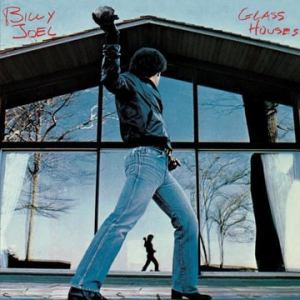Geoff Edgers’ Washington Post article “The Search for the Perfect Sound,” in which he talks to lots of audiophiles and music lovers about his personal journey into the world of audiophile equipment and records, is now active on their website.
NEWSFLASH! This is currently the most popular story/video on the WAPO website! Number One with a bullet, baby. [Alas, no longer.]
Don’t miss the video below of yours truly doing a shootout for Tapestry.
It’s actually not a real shootout. For Tapestry we would typically play 8-10 early pressings and grade them for sound. This was more of a test, to see if I could spot the Hot Stamper among the pretenders, more What’s My Line than a shootout.
Part of the attraction of course is that I’m the guy they love to hate. Just check out the comments.
 And please add some of your own. You are the only people on the planet qualified to talk about Hot Stampers because you are the only ones who have heard them on your own stereos with your own two ears.
And please add some of your own. You are the only people on the planet qualified to talk about Hot Stampers because you are the only ones who have heard them on your own stereos with your own two ears.
Why should anyone care what somebody else has to say about something that that person has never experienced? The reason we stopped posting on the Hoffman website back in 2002 was simply the fact that I was tired of arguing with people that have strong opinions about the results of experiments they have never run.
Hot Stamper Shootouts are simply our way of doing blinded experiments on various pressings of records. We eschew theories and conjecture. We prefer observations and data. We write about these issues a lot here on the blog for those who would like to learn more about records. If you already know it all, this is probably not a blog you will find of much value.
I will be posting some comments soon, mostly about all the stuff that got left on the cutting room floor. We spent most of the time with some orange label Vertigo pressings of Dire Straits’ first album, finding a White Hot Stamper LP out of the batch we played, then comparing our records to the execrable Mobile Fidelity 45 RPM 2 disc pressings, pressings so bad they defy understanding. But that is another story for another day! (The MoFi was mastered by Krieg Wunderlich, so if you see his name in the credits of a record you may be interested in, don’t waste your money. He is hopelessly incompetent and can be counted on to produce some of the worst sounding audiophile records ever made.)
I had eye surgery on my right earlier on the day of the interview, so hopefully that accounts for some of my squinty appearance.
I have also been invited to participate in a Reddit Q&A sometime next week, discussing the issues raised in the article or video anyone would like to ask about, so stay tuned for that, and I hope you will participate as well.
Our customers have plenty of their own Hot Stamper stories to tell, and I hope to hear from some of you on that Reddit panel.
You are the only audiophiles with real, first hand knowledge of what a Hot Stamper sounds like. Perhaps you will wish to share with other audiophiles what they don’t know they are missing.
And if you have any questions of any other kind, I hope you will give me a chance to answer them.
Just email tom@better-records.com
(more…)





 And please add some of your own. You are the only people on the planet qualified to talk about Hot Stampers because you are the only ones who have heard them on your own stereos with your own two ears.
And please add some of your own. You are the only people on the planet qualified to talk about Hot Stampers because you are the only ones who have heard them on your own stereos with your own two ears.



